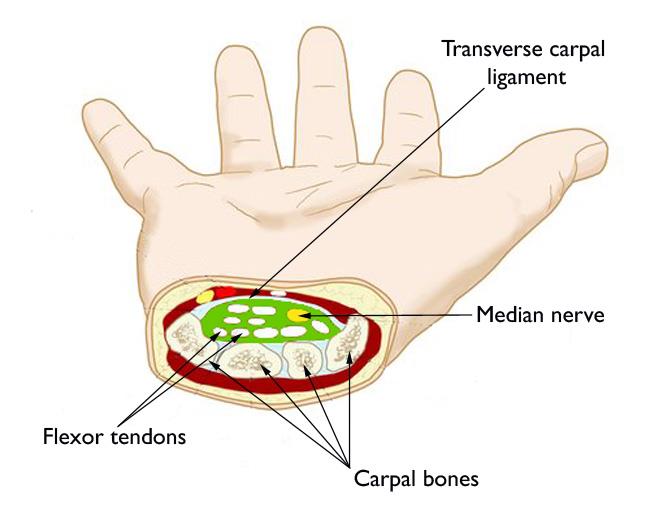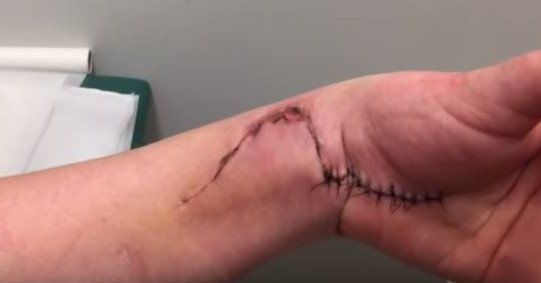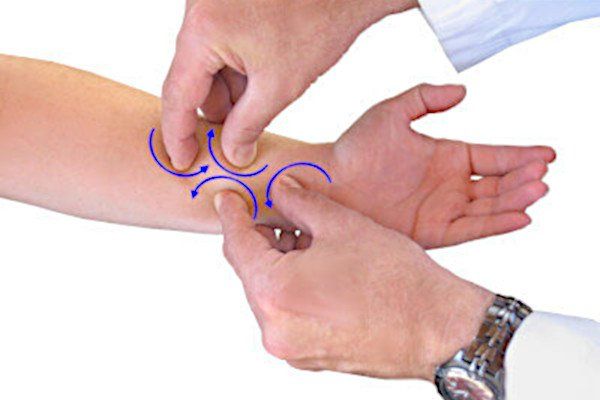Checklist: Carpal Release Surgery Pros & Cons
From Dr. Z - Carpal tunnel syndrome specialist
Carpal Release Surgery Pros & Cons
Like most operations, there are many carpal release surgery pros & cons to think about. Most doctors consider this operation the very last option to treat carpal tunnel syndrome after all nonsurgical options have failed.
So if you’re thinking about surgery, weigh the facts carefully. It's never a simple decision, nor a decision that's right for everybody. Here are carpal release surgery pros & cons you can think about and discuss with your doctor.
- FIND OUT: do you have carpal tunnel? No strings attached self-test.
The disorder we call carpal tunnel syndrome is serious. And therefore it needs quick attention because most times it only worsens. But doctors warn that some patients may not get good results with carpal tunnel surgery. Those patients usually:
- Have severe carpal tunnel symptoms.
- Are over 50 years old.
- Have health problems like diabetes, obesity, high blood pressure, arthritis & chronic conditions.
- Have other issues like depression, alcohol abuse, smoking or emotional stress.
The above are known as risk factors. With any of them, the chances that surgery might fail is higher. Failure means the surgery did not improve symptoms (see below for more information).
Talk to your doctor!
Many people don’t realize there are two sides to the surgery coin. In other words, there are advantages AND disadvantages. I call them "pros & cons". Most carpal release surgery pros & cons revolve around comparing surgery and aftercare with several of the effective non-surgical remedies readily available.
When to have surgery
A patient is normally recommended for release surgery based on a few criteria. Your doctor will go over these with you. Generally, you must fulfill all three of the following criteria:
- First, a patient will have tried every non-surgical remedy to relieve symptoms. The
American Academy of Orthopedic Surgeons says nonsurgical remedies are at least 90% successful. So it’s up to the doctor to recommend them to you.
- Second, a patient has used non-surgical remedies for at least 6 months. If there was no improvement, the doctor recommends surgery.
- Third, the symptoms are so bad they interfere with almost every aspect of a patient’s life. In other words, you must have severe symptoms. Yes, the chances of success are less, but mild or moderate symptoms do not warrant having this operation.
What surgery involves
Usually this surgery is performed on an outpatient basis. The patient has either local (e.g., regional) or general anesthesia. Then the doctor performs one of two kinds of surgery.
- Endoscopic carpal tunnel release surgery means the doctor makes a tiny hole in the wrist. A thin endoscope pokes into the wrist so the doctor can see inside. It contains a camera. Sometimes two holes are needed. These are the “single-portal” and “double-portal” methods, respectively. Some surgeons prefer this technique because it results in less trauma, less pain, and faster recovery time.
- Compare that open carpal release surgery. This procedure requires a 2-3 inch long slit in the palm. This is obviously a more traumatic operation due to the extensive incision. It also produces more pain and requires longer recovery time. But the reason it's a more popular procedure is because it gives the surgeon a clearer and wider view of the surgical site. Therefore, there's less chance the surgeon will accidentally cut something important like a nerve or blood vessel.
Once the surgeon can see inside the wrist, the transverse carpal ligament is located. This holds the wrist bones together. Then the surgeon cuts the ligament which allows the bones snap apart. When that happens, it relieves pressure on the median nerve beneath.
After the surgery there’s a gap where the ligament was cut in half. In time it fills in with scar tissue. Stitches close the skin and the patient can normally go home the same day.
It sounds simple enough, right?
The procedure is not too complicated. But as with any operation, carpal release surgery pros & cons are a bit involved. They must be weighed carefully with your doctor.
Have a candid discussion with your doctor
well before the surgery date. Weigh the pros and cons, how they impact on your aftercare, and what they mean to a quick recovery. You don't want any surprises just before going under anesthesia!
Carpal release surgery “pros”
The two big pros of endoscopic carpal tunnel release surgery are:
- Less hand trauma. That means a shorter recovery time. The ligament is cut without cutting the palm open. Recovery usually takes a couple weeks to months.
- The surgical scar is smaller. The endoscopic surgery scar is less than a half inch.
The two big pros of open carpal tunnel release surgery are:
- The surgeon can better see all structures. This minimizes accidentally cutting vital tissue like a nerve or blood vessel.
- Many more surgeons perform it for these safety reasons.
In most cases either type of surgery gets rid of symptoms right away. But in some patients it takes weeks or months to see results. In others, the symptoms lessen only a little. Yet in others, not at all. Sometimes they disappear for months and then come back.
Carpal release surgery “cons”
The three big cons of endoscopic carpal tunnel release surgery are:
- The surgeon can't see the hand's interior as well. That means there's a greater chance a nerve or blood vessel can be accidentally lacerated.
- It usually costs much more than the open technique.
- Fewer surgeons perform this type of operation.
The three big cons of open carpal tunnel release surgery are:
- The surgical incision on the palm is 2-3 inches long. This means more hand trauma. And that translates into longer recovery time, more post-surgical pain, and decreased hand function.
- There's a greater chance of infection.
- The resultant surgical scar is very noticeable, cosmetically speaking.
In most cases either type of surgery gets rid of symptoms right away. But in some patients it takes weeks or months to see results. In others, the symptoms lessen only a little. Yet in others, not at all. Sometimes they disappear for months and then come back.
After surgery
No matter which type of surgery you have, every patient will have similar aftercare. After surgery every patient must avoid heavy hand activity for a few weeks. Returning to work depends on several factors.
- First, recovery time and returning to work depends on the type of surgery you have. Recovery from open release takes 2-3 times longer than recovery from endoscopic surgery.
- Also, if surgery was on the non-dominant hand, patients normally go back in 2-4 weeks (more or less for open versus endoscopic surgery, respectively). But that’s if the work doesn’t involve repetitive hand activity. If surgery was on the dominant hand, recovery takes much longer.
- If your occupation requires repetitive hand activity, it may take 3-6 months to return (more or less for open versus endoscopic surgery, respectively). Therefore, the
type of job you have is a big factor. For instance, jobs that require a lot of typing or heavy lifting have a longer recovery time. Note that only
10% of workers return their former jobs after carpal tunnel surgery.
- Finally, the effort you put into hand therapy is important. During recovery, you must start hand therapy slowly. This involves stretching and strength exercises. Naturally, the more effort you put into restoring your hand function, the faster you’ll recover.
- You have to be careful to not to re-injure yourself. Re-injury means another surgery, plus a lot of time and effort lost. That’s something most patients can’t afford.
Other potential problems with surgery
When considering all of the carpal release surgery pros & cons, the “cons” or "downsides" are the most wide ranging. Everybody knows all surgery has
some
general risks, and complications. But there are specific ones to carpal tunnel release surgery. The most common risks and dangers are:
- Death (very rare)
- Adverse reaction to the anesthesia.
- Return of symptoms or symptoms never disappear. Some patients see no change after surgery. In others symptoms may come back in a year.
- Partial loss of grip and pinch strength. Usually the loss is permanent.
- Persistent post-surgical pain. Usually any post-surgical pain diminishes greatly by 2-3 weeks. But some patients see persistent pain for months.
- Nerve damage, where the surgeon accidentally nicks the median nerve or its branch.
- There also is the risk of injury to blood vessels and tendons.
- Scar tissue may build up over time and cause functional problems.
Any of these can mean more pain than before the surgery. They also may need a second surgery to repair (called “revision surgery”).
Effectiveness of carpal release surgery
The effectiveness of carpal release surgery is always debated. But “effectiveness” is the most important part of deciding to have it.
Most doctors say the failure rate is 10-15% (with endoscopic surgery). But "failure rate" doesn’t tell us about the patient’s symptoms.
So what does “effectiveness” really mean? Let's ask patients...
The best definition of effectiveness is if the patient is satisfied with their results. Data shows that by 2 years after the surgery, about 50% of patients are satisfied with their results. That means the other 50% are not satisfied.
A recent medical report compared surgery and non-surgical therapies relative to a patient’s overall happiness. The report focused on topics important to a person’s life. For example, it included living without pain, playing sports, etc.
The report said that patients believed surgery was not better than non-surgical methods. In fact, surgery was worse by most measures. Therefore, carpal release surgery may not be the best choice for many patients.
Alternatives to carpal runnel release surgery
Doctors once called carpal release surgery the “gold standard” treatment. However, today we know about other highly effective non-surgical methods that can also reverse symptoms. This isn’t speculation, but medical fact. These remedies include bracing, stretching and myofascial release massage.
Moreover, they are relatively successful in over 90% of cases, according to the American Academy of Orthopedic Surgeons. They are also completed in less time than it takes to recover from carpal tunnel surgery.
Therefore, weigh all of the carpal release surgery pros & cons with your doctor. And be certain to explore all non-surgical options before deciding on surgery.
Conclusion
The various carpal release surgery pros & cons should have you thinking more about this operation. It’s especially true when knowing that non-surgical options are an effective way to get rid of symptoms without surgery.










